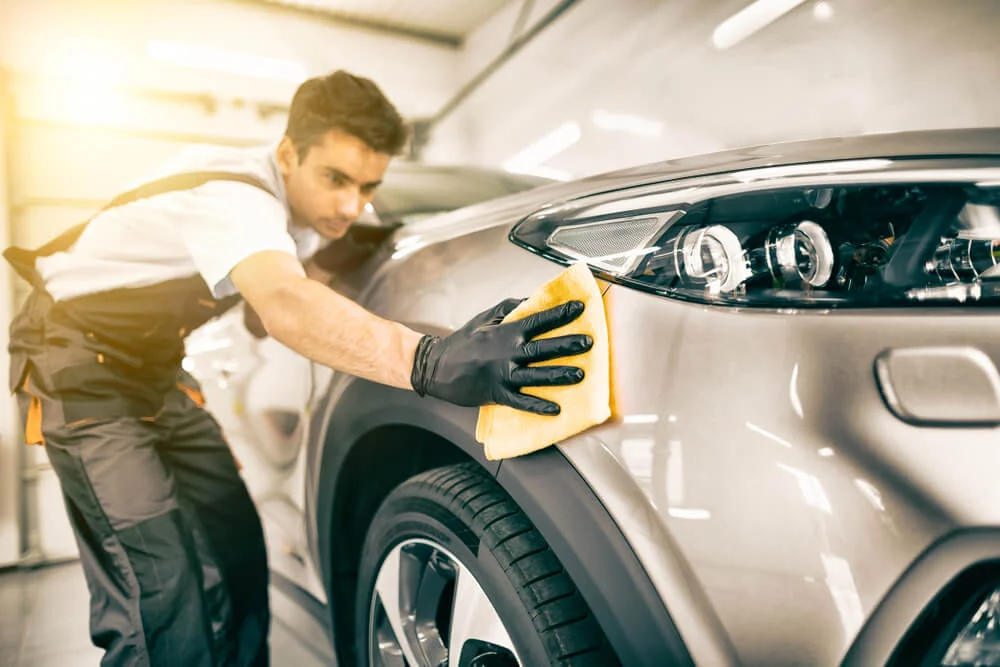


Hey there, car enthusiasts! As a seasoned automotive mechanic, I've encountered my fair share of spray paint mishaps on vehicles. Whether it's accidental overspray from a DIY project or an unfortunate act of vandalism, dealing with unwanted spray paint on your car's surface can be a real headache. But fear not, because today I'm going to share my tried-and-true techniques for removing spray paint without damaging your precious paint job.

Before we dive into the removal process, let's first understand the main culprits behind spray paint landing on your car.
| Cause | Description |
|---|---|
| Overspray or Accidental Spray Paint Application | This scenario often occurs when you're spray painting nearby objects, and the paint mist settles on your car's surface. It can also happen due to intentional vandalism or graffiti, which is a real bummer. |
| Faded or Peeling Clear Coat | The clear coat is the transparent protective layer over the colored base coat paint. If it's damaged or worn, the spray paint can adhere more strongly to the exposed base coat, making removal more challenging. |
Now, before you start scrubbing away, it's crucial to inspect the affected area thoroughly. Here's what you need to do:
Visual Inspection: Take a good look at the extent and type of spray paint (glossy, matte, etc.) on your car's surface.
Clear Coat Check: Run your fingernail over the surface. If it catches or scratches easily, the clear coat is likely compromised.
Age Assessment: Note if the spray paint is fresh or has been there for a while, as this can affect the removal process.
During your inspection, keep an eye out for these telltale signs of damage:
| Sign | Indication |
|---|---|
| Dull or Faded Areas | These indicate a compromised clear coat. |
| Scratches or Chips | These suggest a more severe clear coat failure. |
| Fresh vs. Cured Paint | Fresh spray paint will be easier to remove than older, cured paint. |
Alright, now it's time to roll up your sleeves and get to work! Here are the step-by-step instructions for removing spray paint from your car:
If you're dealing with fresh spray paint, you're in luck! This is the easiest scenario.
Use a bug and tar remover or a clay bar to gently rub off the fresh spray paint.
For those stubborn spots, use a plastic scraper or a soft brush with a solvent-based cleaner.
Avoid harsh abrasives or excessive scrubbing, as it can damage the clear coat.
If the spray paint has cured and your clear coat is still intact, follow these steps:
Use a solvent-based graffiti remover or a specialized spray paint removal product.
Apply the remover, let it dwell for the recommended time, and gently rub off the softened paint.
Rinse thoroughly and follow up with a clay bar treatment and waxing.
In cases where the clear coat is damaged, you'll need to take a more aggressive approach:
Carefully sand or polish the affected area to remove the spray paint and the damaged clear coat.
Reapply a new clear coat or have the area professionally repainted.
Here are a few tips and cautions to keep in mind during the removal process:
| Tip/Caution | Description |
|---|---|
| Test First | Always test the removal products on a small, inconspicuous area first. |
| Ventilation | Work in a well-ventilated area and wear appropriate protective gear. |
| Sensitive Components | Avoid harsh chemicals or abrasives on sensitive trim or plastic components. |
| Patience | Be patient and work in small sections for better control. |
Once you've successfully removed the spray paint, it's essential to take preventive measures to avoid future incidents:
Secure Parking: Park your car in a secure area or cover it when not in use to prevent accidental overspray or vandalism.
Regular Maintenance: Regularly wash and wax your car to maintain the clear coat's integrity.
Prompt Repairs: Address any clear coat damage promptly to prevent further deterioration.
The cost of removing spray paint from your car can vary depending on the extent of the damage and the methods used.
| Method | Cost Range |
|---|---|
| DIY Removal | $10 - $50 |
| Professional Detailing | $100 - $500 |
| Repainting or Clear Coat Application | $300 - $1,000+ |
It's generally more cost-effective to address spray paint removal promptly before the damage worsens and requires more extensive repairs or repainting.

Now, let's dive deeper into the removal techniques for each scenario:
Bug and Tar Remover: Apply a bug and tar remover or a clay bar to the affected area. Gently rub in a circular motion, applying moderate pressure. The fresh spray paint should start to lift and transfer onto the clay bar or remover.
Stubborn Areas: For stubborn spots, use a plastic scraper or a soft-bristled brush dipped in a solvent-based cleaner. Gently scrub the area, being careful not to apply too much pressure or scratch the clear coat.
Rinsing: Once the spray paint is removed, rinse the area thoroughly with clean water to remove any residual cleaner or paint particles.
Graffiti Remover: Apply a solvent-based graffiti remover or a specialized spray paint removal product to the affected area. Follow the manufacturer's instructions for dwell time and application method.
Agitation: After the recommended dwell time, use a soft-bristled brush or a microfiber cloth to gently agitate the area, helping the remover to penetrate and soften the cured spray paint.
Rinsing and Treating: Rinse the area thoroughly with clean water, removing all traces of the remover and softened paint. Follow up with a clay bar treatment to remove any remaining contaminants, and then apply a high-quality wax or sealant to protect the clear coat.
Sanding or Polishing: If the clear coat is damaged or compromised, you'll need to remove it along with the spray paint. Use a fine-grit sandpaper or a dual-action polisher with a cutting compound to carefully sand or polish the affected area.
Reapplication: Once the damaged clear coat and spray paint are removed, you'll need to reapply a new clear coat. This can be done by either having the area professionally repainted or using a high-quality clear coat product designed for DIY application.
Removing spray paint from your car can be a daunting task, but with the right techniques and a bit of elbow grease, you can restore your ride to its former glory. Remember, patience and attention to detail are key. And if you ever feel overwhelmed or unsure, don't hesitate to seek professional help.
Happy detailing, my fellow car enthusiasts! May your paint jobs always shine bright and your rides stay graffiti-free.
Use a bug and tar remover or clay bar to gently rub off the fresh paint. For stubborn spots, use a plastic scraper or soft brush with a solvent-based cleaner.
Run your fingernail over the surface - if it catches or scratches easily, the clear coat is likely compromised. Dull, faded areas or scratches/chips also indicate clear coat failure.
No, household cleaners are usually not strong enough. Use specialized graffiti removers or solvent-based cleaners designed for removing cured paint.
Carefully sand or polish the area to remove the damaged clear coat and spray paint, then reapply a new clear coat or have it professionally repainted.
Park in a secure area, cover your car when not in use, and address any clear coat damage promptly to maintain its integrity.
Avoid harsh abrasives or excessive scrubbing, as it can damage the clear coat. Use fine-grit sandpaper or polishing compounds only if the clear coat is already compromised.
Professional detailing for spray paint removal can cost $100 to $500, while repainting or clear coat application can range from $300 to over $1,000.
Yes, but avoid harsh chemicals or abrasives on sensitive trim or plastic components, as they can cause damage. Use milder solvents or specialized plastic cleaners.
The curing time can vary depending on the type of paint and environmental conditions, but generally, spray paint takes several hours to a few days to fully cure.
Work in a well-ventilated area and wear appropriate protective gear, such as gloves and eye protection, when using solvents or chemicals.

Sarah isn't your average gearhead. With a double major in Mechanical Engineering and Automotive Technology, she dived straight into the world of car repair. After 15 years of turning wrenches at dealerships and independent shops, Sarah joined MICDOT to share her expertise and passion for making cars run like new. Her in-depth knowledge and knack for explaining complex issues in simple terms make her a valuable asset to our team.









